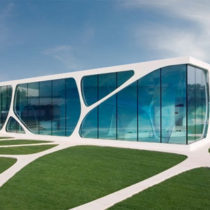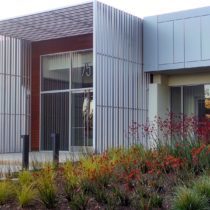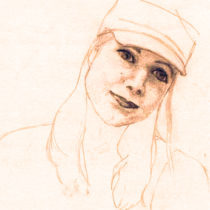Landscape Architecture for Landscape Architects › Forums › GENERAL DISCUSSION › Modeling Plants
- This topic has 1 reply, 8 voices, and was last updated 13 years, 6 months ago by
 Trace One.
Trace One.
-
AuthorPosts
-
October 17, 2010 at 4:15 pm #167334
 Zach WatsonParticipant
Zach WatsonParticipantI have been thinking about this for a while and what would be the best way for going about it, but I have yet to figure out a good way to model plant material in a project. At the end of the semester our instructors are asking us to build a model of our project (a park). So my question is what have you used in the past to model plant material or what have you heard about or seen that works well?
ZachOctober 17, 2010 at 7:32 pm #167351 Trace OneParticipant
Trace OneParticipantdried lichens and dried yarrow are great..available at any crafts store.. Little cubes of sponges sprayed green and stuck on matchsticks.. You can do anything..architects really get creative with the plant department..
October 17, 2010 at 10:55 pm #167350Tanya Olson
ParticipantTwisted narrow gauge wire trees are the best. You can dip them in foam flocking from a model train store. They have a beautiful texture and you can make black, silver, copper, and bronze. We were discouraged from using dried plants as they tend to still look like the plant that they were and not a tree.
To twist the wire, you take 10+ fairly long strands, fold in half around a drill bit and turn on the drill to twist into a column, then you peel off groups of 2 or 3 to make branches. Here is a pic of what I’m talking about : http://www.miniaturezone.co.uk/ARTICLES/trees/index.htm
Try a search for ‘twisted wire trees’ and you will find all sorts of images.October 18, 2010 at 12:34 am #167349 ncaParticipant
ncaParticipantI’m 100% with Tanya.
‘Stereo wire’ twisted to make all sorts of trees.
October 18, 2010 at 12:40 am #167348Tanya Olson
ParticipantOops – I meant tighten the bit hole around the wire – and ‘drill’ SLOWLY!
October 18, 2010 at 4:25 am #167347 Zach WatsonParticipant
Zach WatsonParticipantThank you for the idea here, I have never seen trees like this before. Last year there were a couple of students that used wire for trees but they were abstract lollipop trees. Now did you just leave them looking like deciduous winter trees or did you use some type of material that gave impression of foliage on the branches?
October 18, 2010 at 9:53 am #167346 Trace OneParticipant
Trace OneParticipantgood idea, twisted wire, but I love the yarrow – didn’t think it looked like yarrow! Maybe depends on scale..20 scale is good for yarrow..(Have to defend it – really loved the model-making..When does one ever get to do that in ‘real life.’…)
: ).October 18, 2010 at 10:47 am #167345 Trace OneParticipant
Trace OneParticipantI saw something done with cut pieces of colored acetates, that I thought was really beautiful..
I think the idea is to choose an idiom, a language, for your model, and stick to it in as unified a way as one can..
October 18, 2010 at 3:01 pm #167344Tanya Olson
ParticipantFor foliage, get flocking from a model train store. It comes in all different colors of greens, crumbled or sheets if I remember correctly. Using crumbled with several colors on one tree really gives some depth. Don’t use hot glue, it will melt the flocking. If I remember right, we just kind of dipped the wire trees in the flocking and it stuck.
Draped cheesecloth over the canopy might also be interesting – kind of like Garrett Eckbo trees in real life.I LOVE the idea of colored acetate trees like Trace mentioned – and yes – pick your style and stick to it – definately DON’T mix dried plants with wire trees with papers…
I guess I would also recommend careful time management here as well. You can get pretty carried away trying to make each tree really look exactly like a tree which is a lot of needless work. Plain copper wire trees are beautiful – particularly if you use a very thing gauge wire.
October 19, 2010 at 3:05 am #167343 Thomas J. JohnsonParticipant
Thomas J. JohnsonParticipantHere are a couple of school projects. The first one uses dried thistles as trees. For the second one I stripped wire for trees, spread the wires and the insulated section becomes the trunk. I cut foam for hedges and evergreens and spray painted it all black… Please disregard the title block…. Part of making vegetation is having your own style. Have fun with it… One of the most important things is scale. If your trees are the right size it makes your model read well. If they are too big/small it becomes Alice in Wonderland-esque
October 19, 2010 at 3:09 am #167342 Thomas J. JohnsonParticipantOctober 19, 2010 at 3:15 am #167341
Thomas J. JohnsonParticipantOctober 19, 2010 at 3:15 am #167341 Wes Arola, RLAParticipant
Wes Arola, RLAParticipantIts too bad you cant save your money and time and use Sketchup. You will 99% never have to build a model in an office. Good luck~!
A cool thing you could do is find a place that does CNC work and have them cut your boards (based on cad drawings) for contours or buildings.
October 19, 2010 at 9:23 am #167340 Trace OneParticipant
Trace OneParticipantnice! Love the thistles!
October 19, 2010 at 3:18 pm #167339 Monica GuillaudParticipant
Monica GuillaudParticipantWhat scale? Dried plant material that resembles the larger product is a good way to make it look natural. For example, I often use dried yarrow to represent deciduous trees. The scale of the model and the plants in question are important to consider.
October 20, 2010 at 3:35 pm #167338 Rob HalpernParticipant
Rob HalpernParticipantAn excellent designer I used to work with preferred dried seed heads from Hygrangea arborescens (but the snowball cultivars, though). But it is hard to come by if you don’t have it growing in your own yard.
-
AuthorPosts
- You must be logged in to reply to this topic.

